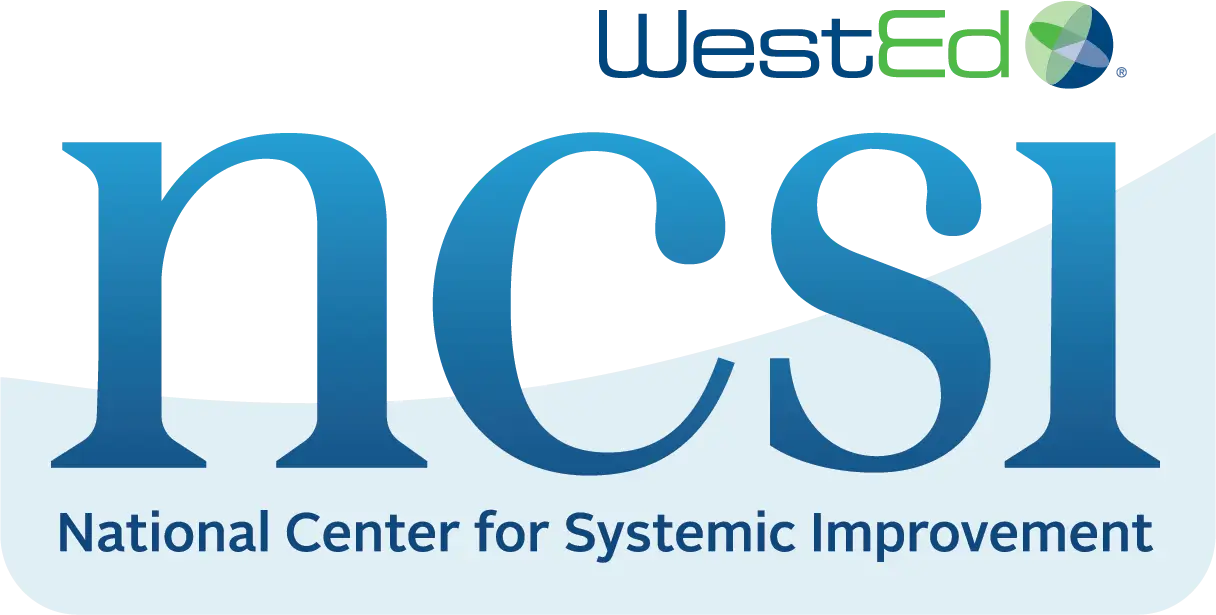OSEP QA 23-01
For OSEP guidance and requirements related to state general supervision systems, please refer to the July 24, 2023 Questions and Answers document: State General Supervision Responsibilities Under Parts B and C of the IDEA.
NCSI’s General Supervision Toolkit is designed to serve as a general supervision resource hub for states. It includes tools and resources to help strengthen state systems of general supervision and ensure alignment with IDEA requirements. The toolkit features resources from NCSI and other federally funded technical assistance centers as well as the U.S. Department of Education Office of Special Education Programs (OSEP).
Section 1 of the General Supervision Toolkit is organized around five key characteristics of an effective state general supervision system and offers related tools and resources. If you are interested in systemic improvements to your general supervision system, this may be a helpful entry point.
Section 2 of the General Supervision Toolkit is organized around the eight components of a state general supervision system and offers related topical resources. If you are interested in delving more deeply into the individual components (or “puzzle pieces”) of a general supervision system, this may be a helpful entry point.
For support in using any of the resources in this toolkit, please contact a TA Liaison or Ask the NCSI to explore customized TA options.

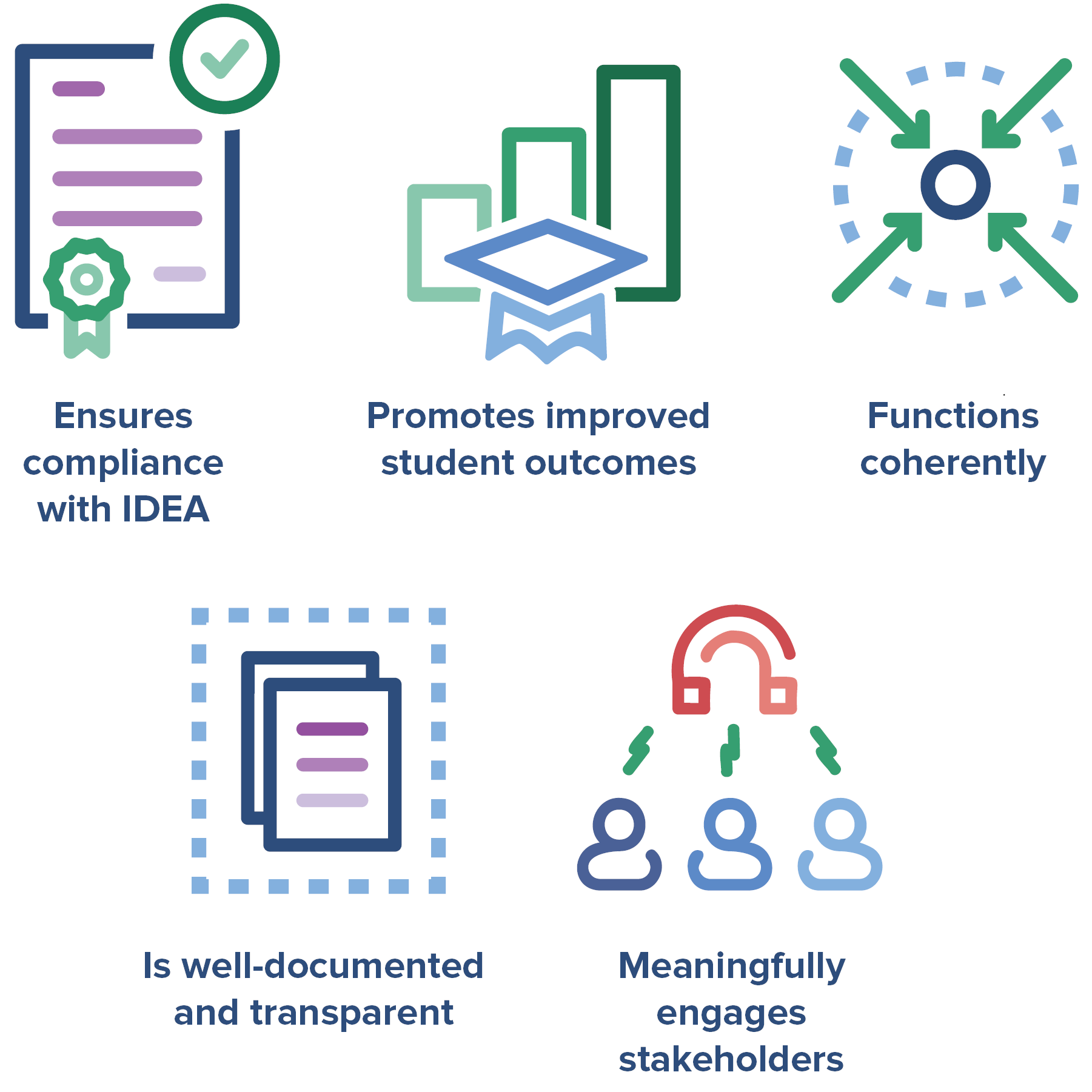
Section 1. Key Characteristics of an Effective State General Supervision System
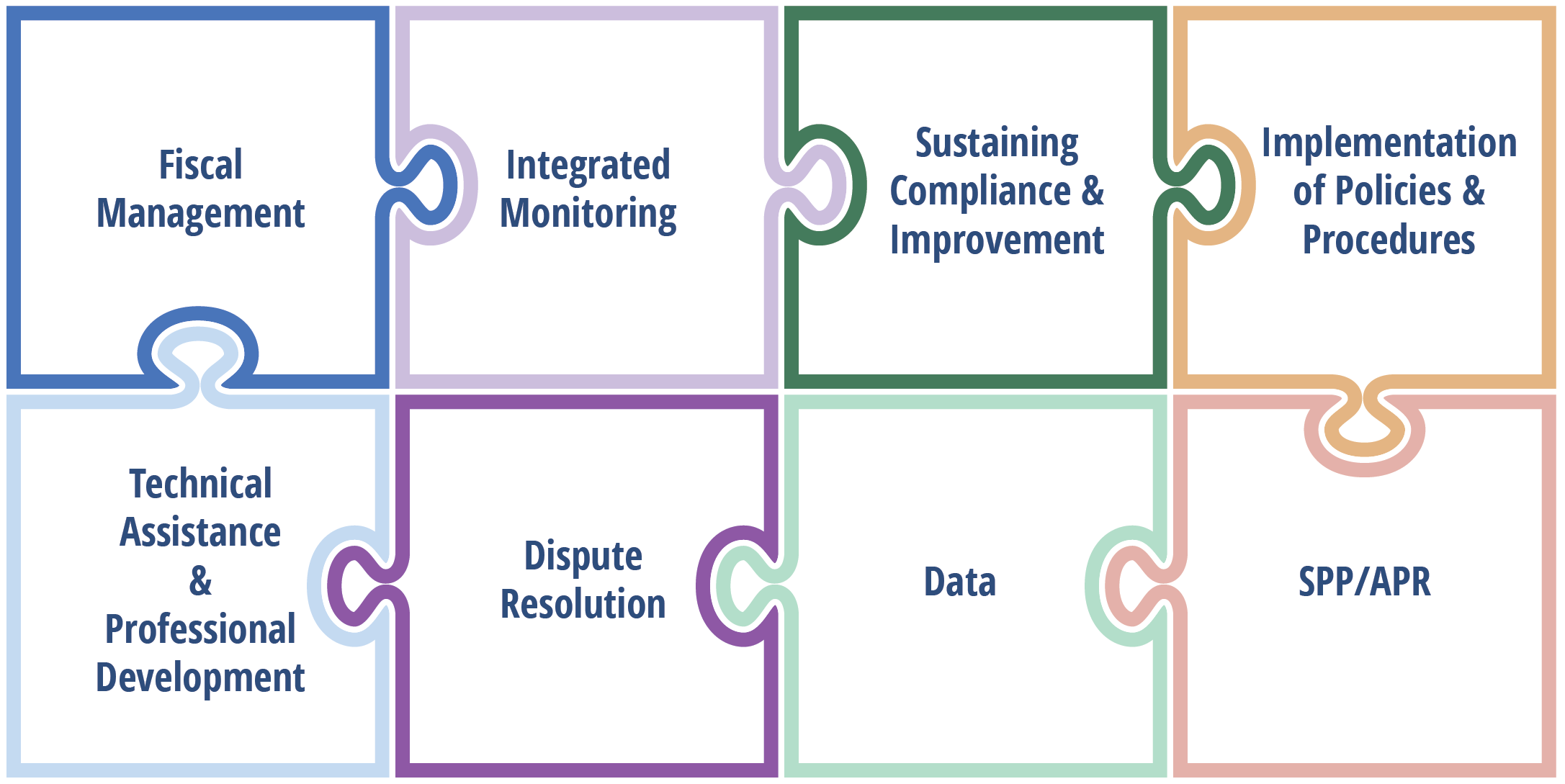
Section 2. Components of a State General Supervision System
Section 1. What are the key characteristics of an effective state general supervision system?
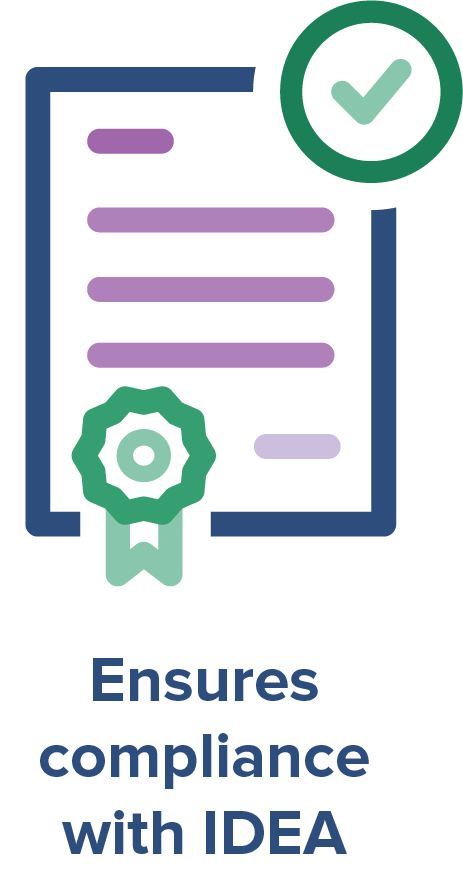
Ensures Compliance With IDEA
- A State Guide on Identifying, Correcting, and Reporting Noncompliance in Accordance with IDEA Requirements (NCSI, ECTA, IDC, DaSy)
- Fast Five: Five State Strategies to Effectively Communicate and Reinforce IDEA Compliance Requirements (NCSI)
- Fast Five: Five Principles (Plus One!) to Guide State Monitoring (NCSI)
- Fast Five: Monitoring Beyond the SPP APR: Five Factors (Plus One!) to Consider (NCSI)
- Fast Five: Strategies for Effectively and Efficiently Staffing State Monitoring Activities (NCSI)
- Identifying, Correcting, and Reporting Noncompliance: A State Guide (NCSI, DaSy, ECTA, IDC, CIFR)
- State Monitoring Considerations Worksheet (NCSI)

Promotes improved student outcomes
- Fast Five: Five Ways to Center Results Data in State General Supervision Systems (NCSI)
- Fast Five: Five Considerations When Planning to Include Results Data in General Supervision Systems (NCSI)
- Fast Five: Five Questions Answered about Educational Benefit Review (NCSI)
- General Soup podcast: Measuring Educational Benefit (NCSI)
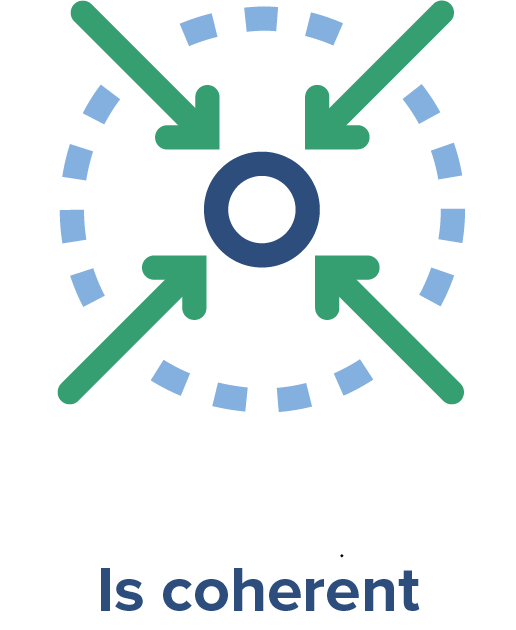
Functions Coherently – guided by a clear vision and supported by aligned and integrated accountability and support activities
- Fast Five: Five Drivers of Coherence in State General Supervision Systems (NCSI)
- A State Guide to Establishing a Statewide System of Accountability and Support to Improve Results and Functional Outcomes for Students with Disabilities (NCSI)
- Assessing the Coherence of State General Supervision Systems: A Worksheet (NCSI)
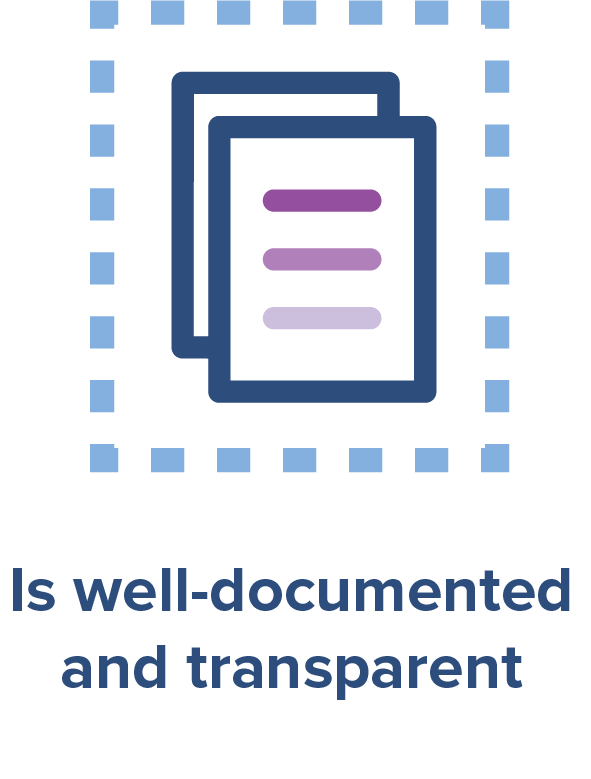
Is well-documented and transparent
- Assessing the Documentation and Transparency of State General Supervision Systems: A Worksheet (NCSI) coming soon
- State Monitoring Considerations Worksheet (NCSI)
- Adapted OSEP DMS 2.0 monitoring protocols for state use (NCSI)
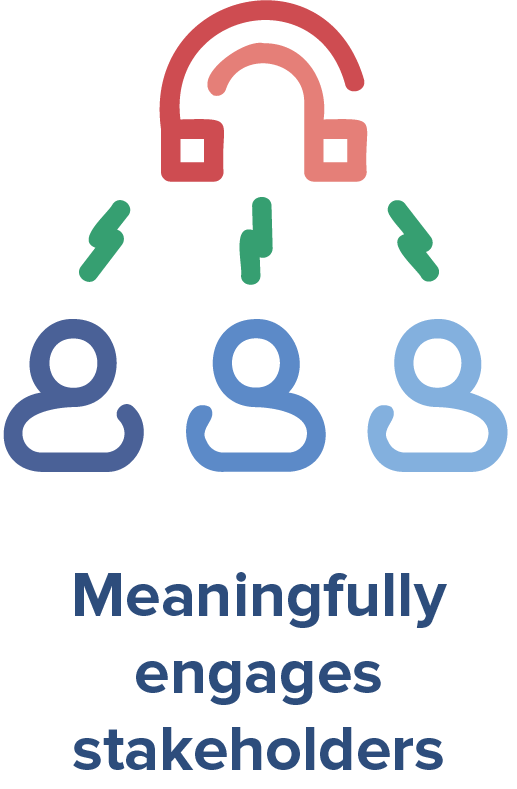
Meaningfully engages stakeholders
- Fast Five: Five Recommendations for Engaging Stakeholders in the Development, Implementation and Evaluation of Results-Based Accountability and Support Systems (NCSI)
- Stakeholder engagement resources including LbC and Serving on Groups
OSEP QA 23-01
For OSEP guidance and requirements related to state general supervision systems, please refer to the July 24, 2023 Questions and Answers document: State General Supervision Responsibilities Under Parts B and C of the IDEA.
Section 2. What are the components of a state general supervision system?
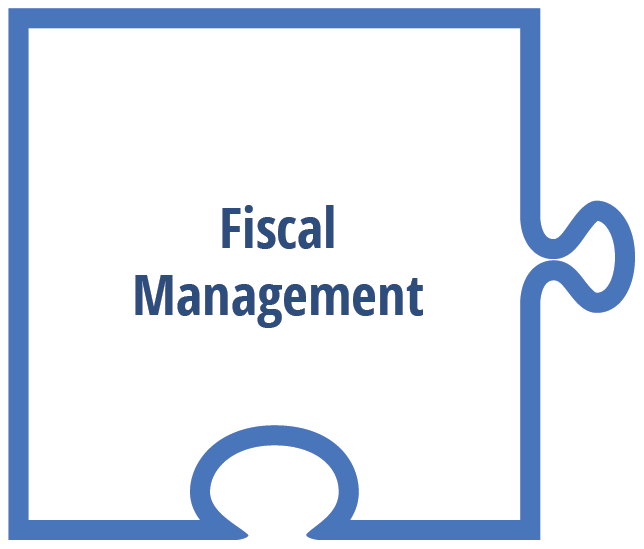
Fiscal Management
A state’s fiscal management system will include documentation of required budgetary information, policies and procedures reflecting IDEA, EDGAR (Electronic Data Gathering, Analysis, and Retrieval system), and Uniform Guidance requirements and evidence of implementation of those procedures, all of which assist states in using Federal funds for improving results and outcomes for infants, toddlers, and children with disabilities.
TA Center Resources
- State Spotlight: Maine uses risk assessment to Monitor Federal Grant Programs (NCSI)
- Fast Five: Five Questions Answered About Risk Assessments (NCSI)
- State Education Agency Self-Assessment: Children with Disabilities Enrolled by Their Parents in Private Schools (NCSI)
- Proportionate Share Tracker (NCSI)
- Developing Written Procedures for the Allocation of IDEA Part B Subgrants to the LEAs (CIFR)
- Developing Written Procedures for Local Educational Agency Maintenance of Effort (CIFR)
- Developing Written Procedures for Maintenance of State Financial Support (CIFR)
- Developing Written Procedures for IDEA Part B Subrecipient Fiscal Monitoring (NCSI)
- Quick Reference Guide on the Timely Expenditure of IDEA Funds (NCSI, CIFR, ECTA, and DaSy)
- SEA Data Processes: Toolkit: Local Education Agency (LEA) Maintenance of Effort (MOE) protocol and MOE and CEIS Protocol (IDC)
OSEP Resources
- OSEP DMS 2.0 Fiscal Part B Subrecipient Monitoring Protocol
- Fiscal Management for State Agencies with Primary Fiscal Responsibility
- OSEP DMS 2.0 IDEA Part B Fiscal Monitoring Protocols
- Fast Five: Five Recommendations for Engaging Stakeholders in the Development, Implementation and Evaluation of Results-Based Accountability and Support Systems (NCSI)
- Stakeholder engagement resources including LbC and Serving on Groups
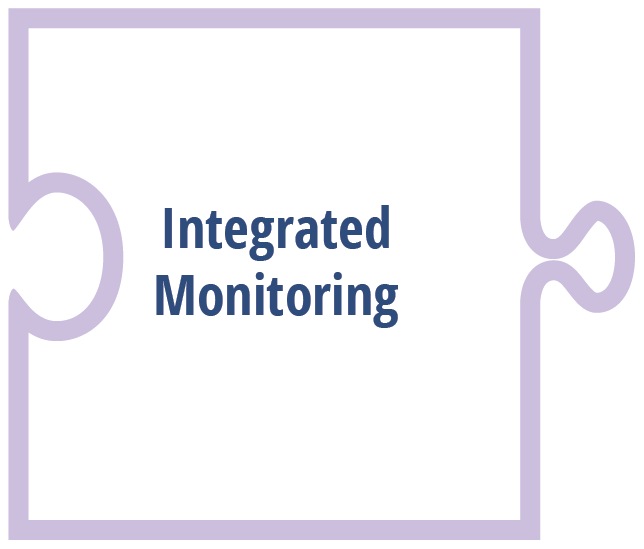
Integrated monitoring
A multifaceted process or system that is designed to examine and evaluate each state’s general supervision system with an emphasis on improved educational results, functional outcomes and compliance with IDEA statutory and regulatory requirements.
TA Center Resources
- A State Guide on Identifying, Correcting, and Reporting Noncompliance in Accordance with IDEA Requirements (NCSI, ECTA, IDC, DaSy)
- A State Guide on Identifying, Correcting, and Reporting Noncompliance with IDEA Requirements Visual (NCSI, ECTA, IDC, DaSy)
- Fast Five: Five Questions Answered About Risk Assessments (NCSI)
- Fast Five: Five State Strategies to Effectively Communicate and Reinforce IDEA Compliance Requirements (NCSI)
- Fast Five: Five Principles (Plus One!) to Guide State Monitoring (NCSI)
- Fast Five: Monitoring Beyond the SPP APR: Five Factors (Plus One!) to Consider (NCSI)
- State Monitoring Considerations Worksheet (NCSI)
OSEP Resources
- OSEP DMS 2.0 Parts B and C — Integrated Monitoring Protocol (Word)
- Significant Disproportionality – Essential Questions and Answers (March 2017)
- Dear Colleague Letter on Implementation of IDEA Discipline Provisions (July 19, 2022)
- Questions and Answers on Serving Children with Disabilities Placed by Their Parents in Private Schools (rev. Feb 2022)
- Policy Letter: November 10, 2021 to IDEA Part B State Directors
- Frequently Asked Questions about the Rights of Students with Disabilities in Public Charter Schools under the Individuals with Disabilities Education Act (December 27, 2016)
- Dear Colleague Letter Regarding Education of Children with Disabilities Attending Public Virtual Schools (August 5, 2016)
- Students with Disabilities in Correctional Facilities, January 29, 2019
- State Correctional Education Self-Assessment (SCES)
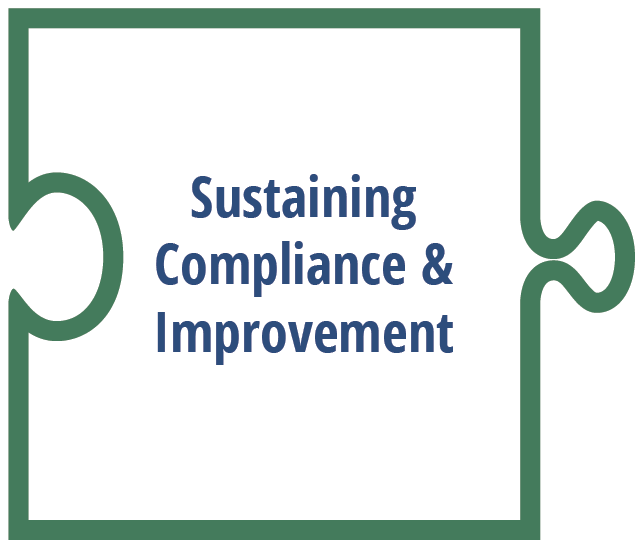
Sustaining compliance and improvement
A system for recognizing and improving compliance and results, including use of improvement activities, incentives, and sanctions.
TA Center Resources
- A State Guide on Identifying, Correcting, and Reporting Noncompliance in Accordance with IDEA Requirements (NCSI, ECTA, IDC, DaSy)
- A State Guide on Identifying, Correcting, and Reporting Noncompliance with IDEA Requirements Visual (NCSI, ECTA, IDC, DaSy)
OSEP Resources
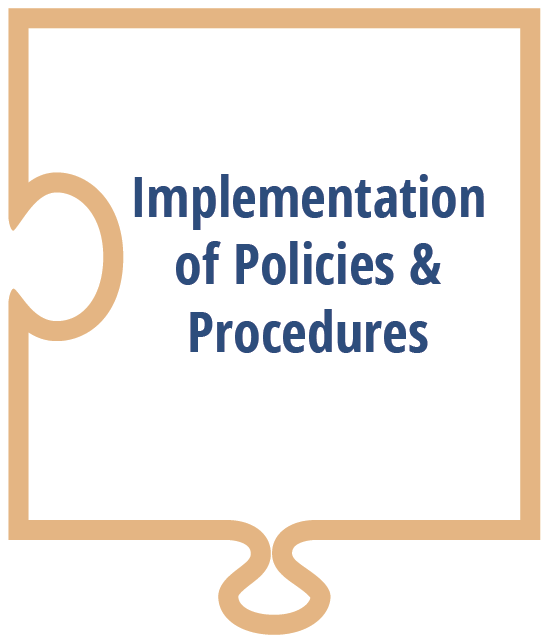
Implementation of policies and procedures
Framing questions to consider to support implementation of any policy or procedure:
- Does the SEA have a written procedure related to this regulation/requirement?
- What training has the SEA provided related to this regulation requirement?
- How does the SEA implement this regulation requirement?
- How does the SEA monitor implementation of this regulation requirement?
- How does the SEA evaluate and adjust policies and procedures based on data from implementation?
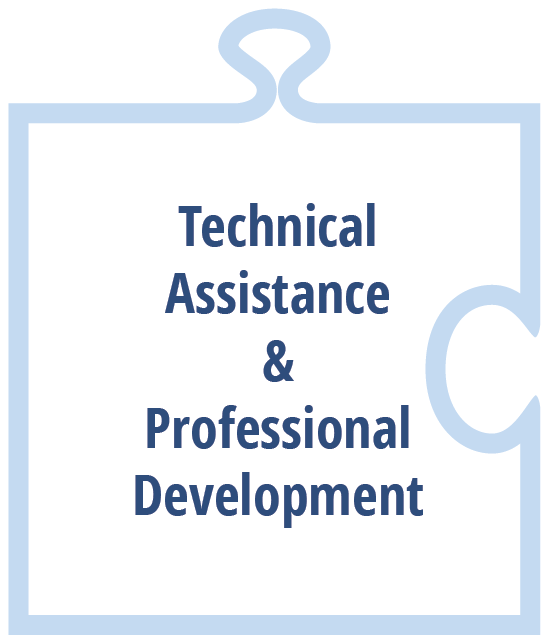
Technical assistance and professional development
State technical assistance systems should strengthen the capacity of local systems to effectively implement IDEA and improve student outcomes.
TA Center Resources
- A State Guide to Establishing a Statewide System of Accountability and Support to Improve Results and Functional Outcomes for Students with Disabilities (NCSI)
- Fast Five: Five Questions Answered about Educational Benefit Review (NCSI)
- General Soup podcast: Measuring Educational Benefit (NCSI)
- Three Circles of Evidence-Based Decision Making to Support Students with Disabilities (NCSI)
- Five Considerations that Educators Can Employ for Accelerated Learning (NCSI)
- Effective Practices for Coaches Learning Module (NCSI)
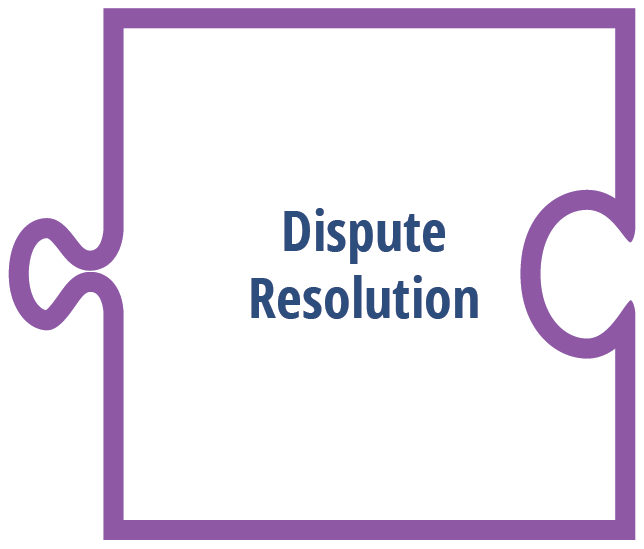
Dispute resolution
The Individuals with Disabilities Education Act (IDEA) provides multiple procedural options to resolve disputes that may arise between parents/guardians and schools/local educational agencies (LEAs) and possible violations of the law. These options are (a) mediation, (b) state complaints, and (c) due process hearing requests.
TA Center Resources
- Fast Five: Five Ways to Effectively Use Dispute Resolution Data in State General Supervision Systems to Improve Implementation of IDEA (NCSI)
- Quick Guide to Special Education Dispute Resolution Processes for Parents of Children & Youth (Ages 3-21) (CADRE)
- National Dispute Resolution Data Summaries (CADRE)
OSEP Resources
- OSEP DMS 2.0 Dispute Resolution Protocols
- Question and Answers about Dispute Resolution Procedures under Part B of the Individuals with Disabilities Education Act (Part B) (July 23, 2013)
- Dear Colleague Letter on Use of Due Process Procedures After a Parent has Filed a State Complaint (April 15, 2015)
- Q&A on Dispute Resolution

Data
A data system designed to ensure that the data collected and reported are valid and reliable and that information is reported to the Department and the public in a timely manner. The data system will inform and focus a state’s improvement activities as well as verifying that the data collected and reported reflect actual practice and performance.
TA Center Resources
- Comprehensive IDC Part B Tool & Product List (IDC)
- 618 Data Collection Calendar (IDC)
- SPP/APR Resources at a Glance (IDC)
- SEA Data Processes Toolkit (IDC)
- Fast Five: Five Ways to Center Results Data in State General Supervision Systems (NCSI)
- Fast Five: Five Considerations When Planning to Include Results Data in General Supervision Systems (NCSI)
OSEP Resources
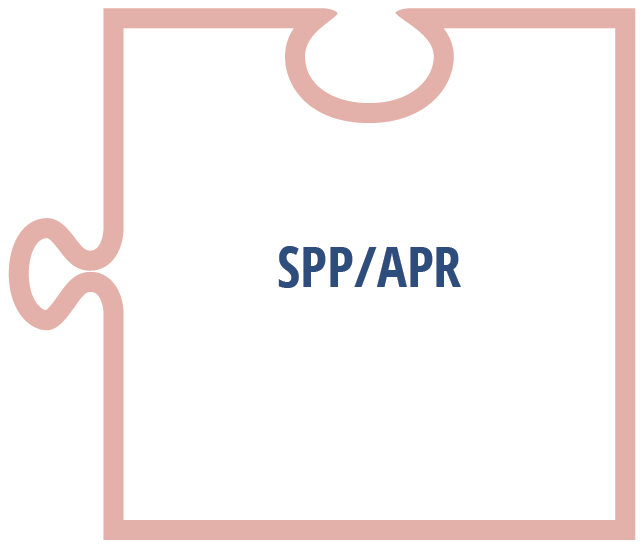
SPP/APR
The Individuals with Disabilities Education Act (IDEA) requires each state to develop a state performance plan/annual performance report (SPP/APR) that evaluates the state’s efforts to implement the requirements and purposes of the IDEA and describes how the state will improve its implementation. A state is required to submit a state performance plan (SPP) at least every six years. Each year, states must report against the targets in its SPP in an annual performance report (APR).
TA Center Resources
- SPP/APR Resources at a Glance (IDC)
- SPP/APR Indicator Cards (IDC)
- Fast Five: Five Things to Know About State and LEA Determinations (NCSI)
